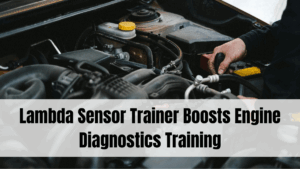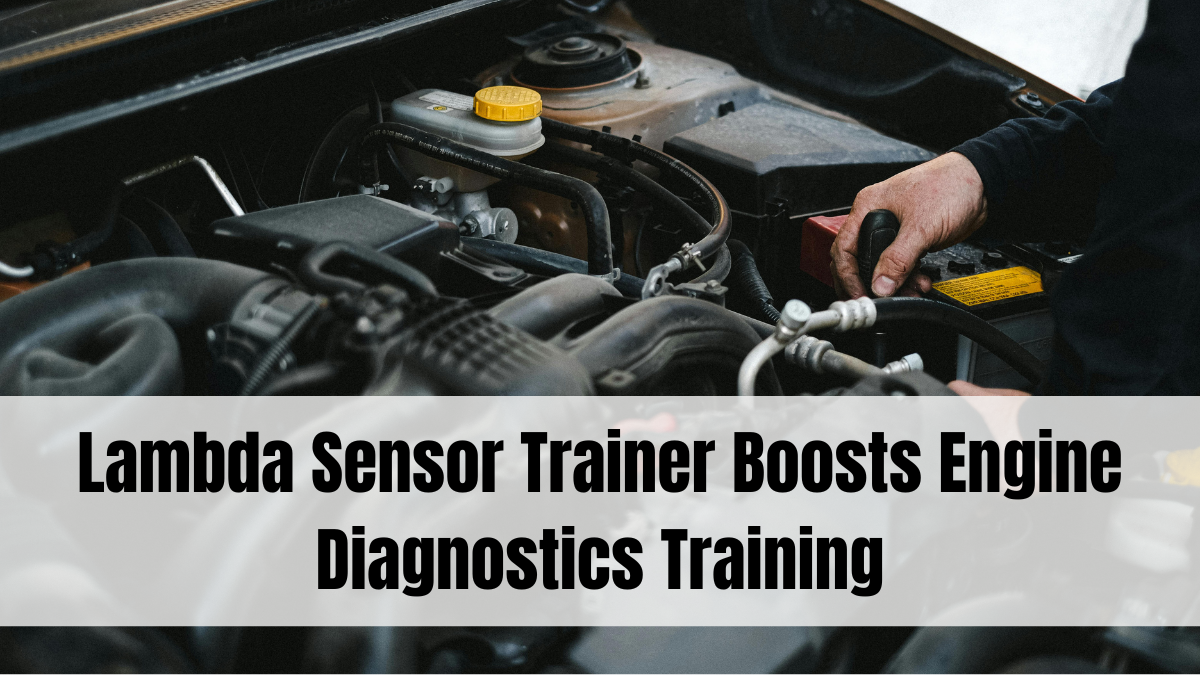In today’s high-efficiency engines, lambda sensors — also known as oxygen sensors — play a vital role in controlling emissions and fuel economy. Yet, understanding their operation and accurately diagnosing faults remains a challenge for many entry-level technicians. That’s where the latest innovation in lambda sensor trainer education is making a difference.
These advanced teaching tools are bridging the gap between theory and real-world diagnostics by offering a safe, hands-on way to explore how lambda sensors interact with engine control systems. Vocational programs and technical colleges are rapidly adopting them to ensure students are job-ready from day one.

What Is a Lambda Sensor and Why Is It Important?
The lambda sensor is a critical component in the engine’s fuel management and emission system. It measures the ratio of oxygen in the exhaust gases and helps the ECU (Engine Control Unit) adjust the air-fuel mixture for optimal combustion.
If a sensor malfunctions, it can lead to:
-
Increased fuel consumption
-
Emission system failure
-
Poor engine performance
-
Check Engine Light (CEL) alerts
Understanding how to test, interpret, and replace lambda sensors is essential for any technician. That’s why hands-on education tools are so valuable.
Features of the New Lambda Sensor Trainers
Modern lambda sensor trainers simulate real vehicle environments and allow students to interact with components just like they would in a service bay — but without the safety risks or need for a full engine.
Key features include:
-
Real-time exhaust gas simulation for sensor signal behavior
-
Fault injection modules to simulate common sensor issues
-
Multi-type sensor support (narrowband, wideband, heated sensors)
-
Digital displays and waveform readouts for accurate signal monitoring
-
Integrated multimeter ports for voltage and resistance testing
These features provide a comprehensive, interactive experience that accelerates the learning process and builds diagnostic confidence.
Improving Student Skill and Speed
With lambda sensor trainer education, students learn to:
-
Understand sensor feedback in both open-loop and closed-loop conditions
-
Use scan tools to interpret sensor response
-
Evaluate performance using oscilloscope waveforms
-
Detect slow response, heater circuit faults, and voltage issues
This hands-on experience sharpens not just technical skill but also decision-making and troubleshooting speed — traits highly valued in the industry.
Classroom Integration and Curriculum Alignment
Lambda sensor trainers are designed to fit seamlessly into modern automotive training programs. Schools use them to:
-
Reinforce textbook concepts with live demonstrations
-
Conduct performance comparisons between sensor types
-
Offer structured lab exercises with measurable outcomes
-
Align with ASE A8 (Engine Performance) certification preparation
Some training kits also come with instructor dashboards, enabling educators to monitor student performance in real time and inject faults during lab exercises for added challenge.
Cost-Effective and Scalable for Institutions
For colleges and training centers, these trainers are a cost-effective alternative to full vehicle diagnostics. Their compact size and modular nature mean:
-
Easy setup in small labs or mobile training centers
-
Reduced maintenance and wear compared to real engines
-
Scalable for large class sizes with multiple workstations
-
Compatibility with other trainer modules like ECU testers or ignition systems
This flexibility helps institutions deliver modern, effective automotive education without straining budgets.
FAQs
What is a lambda sensor trainer?
It’s an educational device that replicates the operation of a vehicle’s oxygen sensor system, allowing students to learn diagnostics in a controlled, hands-on setting.
Why are lambda sensor trainers useful in automotive education?
They help students understand how oxygen sensors impact fuel economy, emissions, and engine performance, while providing practical training in sensor diagnostics.
What skills do students gain from these trainers?
Students learn how to read sensor values, identify faults, perform live tests, and interpret sensor waveforms for engine performance issues.
Are these trainers aligned with certification programs?
Yes, they are typically used to support ASE A8 and other engine performance certification modules, making them valuable in certification prep courses.
Can these trainers replace vehicle-based learning?
They complement it. While they can’t fully replace on-vehicle diagnostics, they prepare students thoroughly before working on live systems, reducing errors and increasing safety.
Click here to know more.
